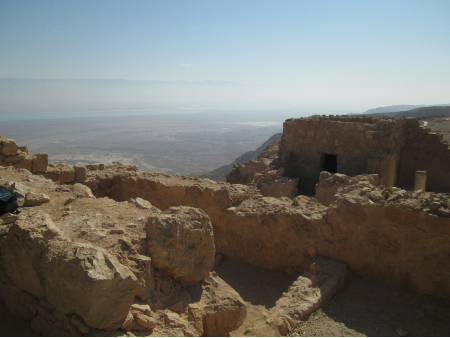Quick Bytes
- Archaeological finds in Zanoah support the Biblical Exodus narrative.
- Artifacts date back 3,200 years, coinciding with the Israelites’ arrival in Canaan.
- A jar handle bearing a royal inscription links to King Hezekiah’s reign.
- Excavations reveal advanced agriculture and artifacts from the early Byzantine period.
Unearthing History: Zanoah’s Archaeological Revelations
In a remarkable discovery, archaeologists have unearthed evidence in the ancient city of Zanoah that supports the Biblical story of Moses leading the Israelites to the Promised Land. The Israeli Antiquities Authority’s excavation has brought to light stone walls, pottery, and other significant artifacts dating back over 3,200 years.
The city of Zanoah, mentioned in the Old Testament, was a thriving community during the time the Israelites are believed to have settled in Canaan, around 1406 to 1407 BC. Among the findings, a broken jar handle stamped with ‘of the King’ stands out, suggesting a connection to King Hezekiah’s rule in Judah around 701 BC. This king is known for his religious reforms and centralizing worship in Jerusalem.
Researchers found well-preserved pottery and large white rocks used as retaining walls for agricultural terraces, indicating sophisticated farming techniques. The presence of an LMLK stamp on one of the pottery pieces is a rare find in the Judah foothills and points to Zanoah’s regional significance.
The Biblical narrative describes Moses leading the Israelites out of slavery in Egypt, receiving the Ten Commandments at Mount Sinai, and their subsequent journey to Canaan. Joshua, succeeding Moses, leads the Israelites into the Promised Land, with Zanoah being one of the cities within the tribal territory of Judah.
The site also yielded bowls, jugs, bronze jewelry, iron tools, and a unique cosmetic bowl fragment, all dating to the period of the Israelites’ arrival. These artifacts, along with the evidence of early Byzantine farming, highlight Zanoah’s historical and Biblical importance.
The ongoing excavations at Zanoah continue to provide valuable insights into the ancient city’s role, offering concrete evidence that complements the Biblical accounts and promises to reveal more historical secrets.
Image Credits
- Photo credit: Lukas Kacaliak



